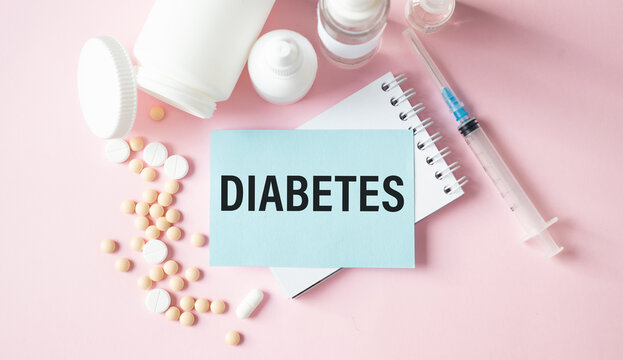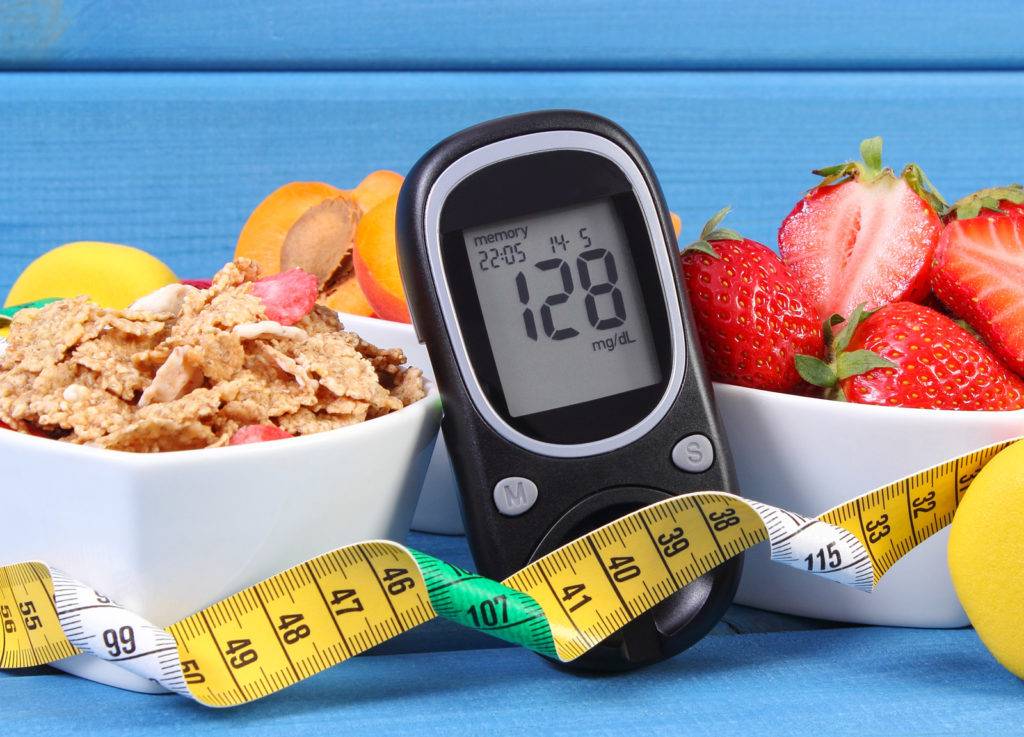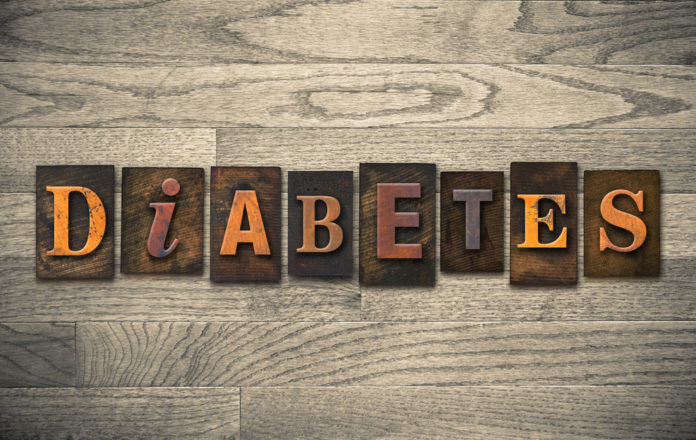According to the American Diabetes Association, over 29 million Americans suffer from diabetes. Nearly 10 percent of the population, and even more alarming, the average American has a one in three chance of developing diabetes symptoms at some point, and 7th leading cause of death in the United States.
That’s why it’s so vital to understand and recognize diabetes symptoms. If ignored, diabetes will dramatically increase your risk of a heart attack, stroke, kidney problems, and blindness – to name just a few horrible health conditions. While there’s technically no known “cure” for diabetes — whether it’s type 1, type 2, or gestational diabetes. But, what if all of this was avoidable – would you believe it?
The Most Common Diabetes Symptoms
Diabetes mellitus, commonly known as diabetes, is a metabolic disease that results from problems controlling the hormone insulin. The hormone insulin helps move glucose from the blood into your cells where it is or is used for energy. With diabetes, your body either doesn’t make enough insulin or can’t effectively use the insulin it does make.
Diabetes symptoms are a result of higher-than-normal levels of glucose (sugar) in your blood. The symptoms of diabetes can vary. Typically, you will discover frequent urination problems, particularly during the night. Although a small portion of the diabetic community suffers from type 1 diabetes, approximately 90 percent or more of this population suffers from type 2. It’s generally caused by insulin resistance and poor health.
Common symptoms and signs of type 1 diabetes include:
- excessive hunger
- feeling very thirsty and drinking a lot
- blurred vision
- tiredness
- frequent urination
- dramatic weight loss in a short period
- having cuts or sores that don’t heal properly
A person might also develop ketoacidosis, a complication of diabetes. Symptoms of this condition include:
- rapid breathing
- dry skin and mouth
- fruity breath odor
- nausea
- flushed face
- vomiting or stomach pain
Common diabetes symptoms associated with type 2 diabetes include:
In type 2 diabetes, symptoms in midlife or older age gradually develop symptoms in stages, this causes your body to rely on alternative energy sources in your tissues, muscles, and organs, especially if the condition goes untreated and worsens. Another type 2 diabetes symptoms may include:
- constant hunger
- a lack of energy
- blurry vision
- fatigue
- excessive thirst
- frequent or increased urination, especially at night
- weight loss
- itchy skin
- dry mouth
- sores or cuts that won’t heal
As the disease progresses, the symptoms become more severe and potentially dangerous. And if you experience any of these symptoms regularly, talk to your doctor. They may recommend that you be tested for diabetes, which is performed with a basic blood draw.
However, it might start earlier if you are:
- overweight
- have polycystic ovary syndrome
- from an ethnic background that has a higher risk of type 2 diabetes
- from a family with a history of type 2 diabetes
- have heart disease
- sedentary
- affected by high blood pressure, now or when you were pregnant
- at higher risk due to high blood pressure, low good cholesterol levels, or high triglyceride level

Common symptoms of gestational diabetes include:
Generally, you won’t experience any noticeable symptoms of gestational diabetes. If you do experience symptoms, you may overlook them because they’re similar to typical pregnancy symptoms. Some women may experience mild symptoms such as:
- fatigue
- increased weight gain
- blurred vision
- excessive thirst
- increased urinary urgency and frequency
- snoring
You should call your doctor if you’re experiencing these symptoms to a greater degree than is normal for you. However, gestational diabetes can increase your risk of other conditions. One of the most serious is preeclampsia, which causes high blood pressure and can be fatal if not treated quickly.
Symptoms Caused by Diabetes Complications
People with diabetes must routinely monitor and regulate their blood sugar. The higher your blood sugar is and the longer you live with it, the greater your risk for complications. This is why early detection and treatment of diabetes is so important, it can greatly decrease the risk of developing complications like nerve damage, further weight gain/inflammation, cardiovascular problems, skin infections, and more.
If not properly managed, it can affect virtually all of your organs and lead to serious complications associated with diabetes including:
- cardiovascular diseases such as high blood pressure, narrowing of the arteries, angina, heart attack, and stroke
- nerve damage or neuropathy
- nephropathy
- retinal damage or retinopathy and eye damage
- hearing impairment
- foot damage such as infections and sores that don’t heal
- skin problems, such as bacterial or fungal infections
- depression
- dementia
Symptoms Related to Nerve Damage (Neuropathy):
Half of all diabetics develop some form of nerve damage, especially if it goes uncontrolled for many years and blood glucose levels remain abnormal. These are the signs of nerve damage due to diabetes:
- muscle aches, weakness, and unsteadiness
- accelerated heartbeat
- perspiration changes
- tingling in the feet, described as “pins and needles”
- carpal tunnel syndrome
- proneness to injuries or falling
- changes in the senses, including smell, taste, sight, and hearing
- erectile dysfunction, vaginal dryness, and loss of orgasms
- burning, stabbing, or shooting pains in my feet and hands
- trouble sleeping
- sensitive skin that feels very hot or cold
- digestive issues
Skin-Related Diabetes Symptoms:
One of the areas affected most and quickest by diabetes is the skin. Leading to poor circulation, slow wound healing, lowered immune function, and itching or dryness. These are the symptoms that cause it:
- acne
- rashes/infections that are sometimes itchy, hot, swollen, red, and painful
- blisters and scales
- bacterial infections
- styes in the eyes and eyelids
- fungal infections
- necrobiosis lipoidica diabeticorum
- jock itch, athlete’s foot, and ringworm
- dermopathy
- folliculitis (infections of hair follicles)
Eye-Related Diabetes Symptoms:
People with diabetes have a higher risk of blindness than people without diabetes. It affects the outer, tough membrane part of the eyes; the macula, the front part, which is clear and curved, and the cornea/retina, which focuses light. According to the National Diabetes Association, almost everyone with type 1 diabetes eventually has nonproliferative retinopathy, and most people with type 2 diabetes also get it.
These are some of the symptoms it causes:
- glaucoma
- seeing spots, vision loss, and even blindness
- nerve damage
- Diabetic retinopathy
- cataracts
- macular degeneration

Natural Ways to Help Control Diabetes Symptoms
Fortunately, diabetes can be controlled and corrected with treatment and lifestyle changes. A high percentage of people with type 2 diabetes can reverse and manage their diabetes symptoms completely naturally by lowering stress, and improving their diet, sleep, and physical activity. And although type 1 diabetes is harder to treat and manage, complications can also be reduced by taking the same steps.
So while most people with diabetes on medicine as part of diabetes care, here are some natural ways that can help you control diabetes and even win the battle with this serious medical condition:
- Regular Checkups
Many people with complications of diabetes won’t have noticeable symptoms, regular checkups can help you control the blood sugar levels, weight, blood pressure, the progression of the disease, eyes, skin, blood pressure levels, weight, and heart. To make sure you don’t put yourself at a higher risk for heart problems, work with your doctor to make sure you maintain near-normal blood pressure, blood cholesterol, and triglyceride (lipid) levels.
- Eat a Balanced Diet and Exercise
Obesity and physical inactivity are linked to the development of type 2 diabetes, which is why exercise is important to control symptoms and lower the risk for complications, such as heart disease. Also, it is important to follow a healthy diet, like avoiding added sugars, trans fats, processed grains and starches, and conventional dairy products. Eating unprocessed, whole foods can help keep your blood sugar in the normal range.
- Control Blood Sugar to Stop Nerve Damage
The best way to help prevent or delay nerve damage is to closely regulate your blood sugar levels. In the case of hormonal imbalances, sexual dysfunctions, and trouble sleeping, lower stress, improve your diet and be more physically active. If you suffer from digestive issues due to nerve damage, take probiotics, digestive enzymes, and supplements like magnesium that control the symptoms, relax muscles, and improve gut health.
- Help Protect and Treat the Skin
If you have diabetes, you can help prevent skin issues and infections, practice good hygiene, control blood sugar levels, and naturally protect it using natural cures such as essential oils. Because, people with diabetes tend to have more bacterial, fungal, and yeast infections than healthy people do.
- Safeguard the Eyes
People who keep their blood sugar levels closer to normal are less likely to have vision-related problems. To prevent eye-related problems like glaucoma and cataracts, make sure you check the eyes at least twice annually. Staying physically active and maintaining a healthy diet can prevent or delay vision loss by controlling blood sugar, plus, also wear sunglasses when in the sun, and if your eyes have been severely damaged, you should get a lens transplant to preserve vision.

What Causes Diabetes?
People develop diabetes when they stop releasing or responding to normal amounts of insulin. When any of these things happens, the body is unable to get sugar from the blood into the cells. That leads to high blood sugar levels.
The hormone insulin moves sugar from the blood into your cells to be stored or used for energy. We need insulin to carry glucose through the bloodstream to cells to provide enough energy for muscle growth and development, brain activity, and so on. With diabetes, your body either doesn’t make enough insulin or can’t effectively use the insulin it does make.
Type 1 diabetes is believed to be an autoimmune condition. Therefore no insulin is produced and blood sugar levels go unmanaged. For some reason, the immune system mistakenly attacks and destroys insulin-producing beta cells in the pancreas. Genetic and environmental elements, such as viruses, may play a role. Type 1 diabetes tends to develop at a younger age, usually before someone turns 20 years old.
If you have type 2 diabetes, insulin is produced but it’s either not enough or the person doesn’t respond to it appropriately (called “insulin resistance“). Your body is no longer using the hormone efficiently. This forces your pancreas to work harder to make more insulin. Type 2 diabetes usually occurs in people over age 40 (although it’s becoming more prevalent in children), especially those who are overweight.
Insulin is a hormone made in your pancreas, a gland located behind your stomach. It regulates glucose levels in the blood, which respond to how much glucose is detected in the blood at any one time. Unmanaged diabetes allows glucose to build up in the blood rather than being distributed to cells or stored. This can wreak havoc with virtually every part of your body.
Takeaways
- Some types of diabetes — like type 1 — are caused by factors that are out of your control. The body is unable to process glucose, due to the lack of insulin. Symptoms usually develop sooner and at a younger age than with type 2 diabetes. Type 2 diabetes can be prevented with better food choices, increased activity, and weight loss.
- Lifestyle interventions can significantly reduce your chances of developing diabetes. These include losing weight by exercising at least four hours per week and eating a diet rich in protein, fiber, and healthy fats. Don’t wait until serious complications arise; inquire about your potential diabetic symptoms today.
- Discuss potential diabetes risks with your doctor. If you’re at risk, have your blood sugar tested and follow your doctor’s advice for managing your blood sugar. Once you are diagnosed, there are medications, treatments, and changes to your diet and physical activity that will stabilize your blood sugar levels.
- Having diabetes is one of the biggest risk factors for developing eye problems and even vision loss/blindness. However, getting your blood sugar under control can help correct vision problems.
- There is a fair share of skin disorders associated with type 2 diabetes, some more serious than others. Diabetes symptoms on the skin can be some of the easiest to recognize and the earliest to show up. Tends to be associated with poor circulation, which reduces blood flow to the skin.



